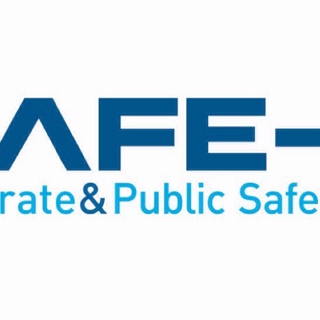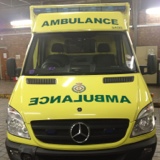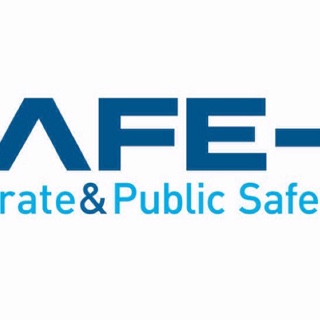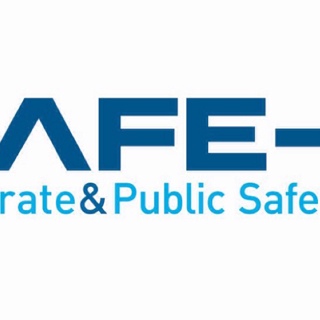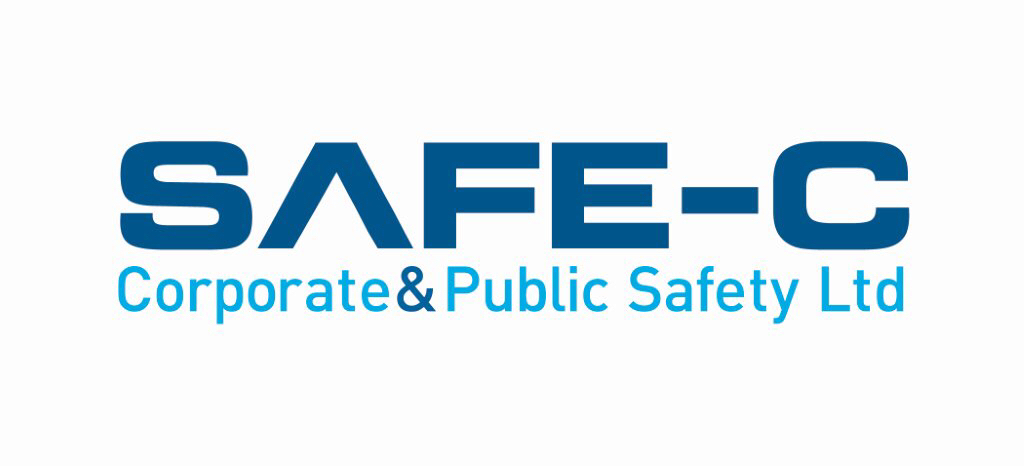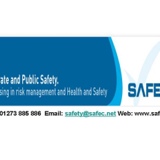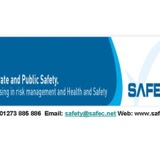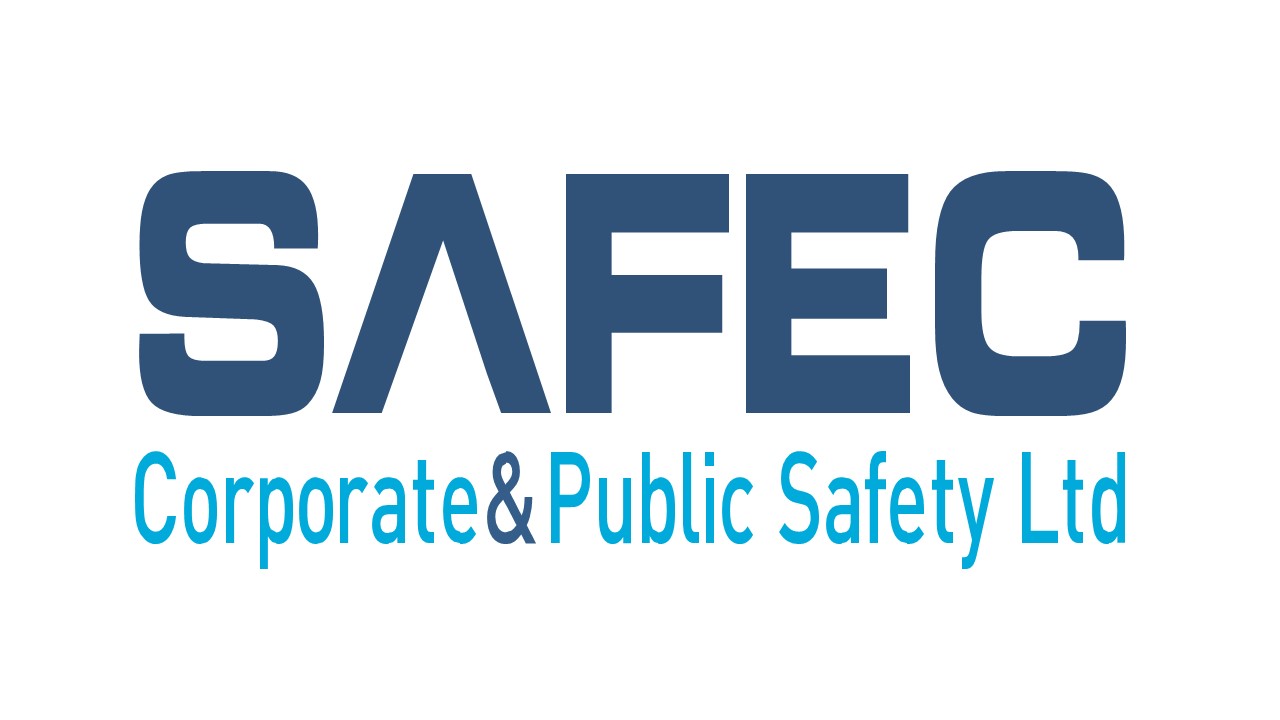Information
-
Document No.
-
Audit Title
-
Client / Site
Details
-
Audit Start
-
Audit Finish
-
Conducted on
-
Prepared by
-
HACCP and Food Safety Audit
Outlets commence their audit with zero penalty points.
Whenever an element of the audit is not up to business standards penalty points are added.
The penalty points range for 2 to 8 points depending on the level of risk associated with the audit element (for example temperature control has a higher risk if not maintained, thus the maximum penalty is 8 points)
and will be added according to the level of non compliance 2, 4 or 8 points. Some elements with a lower risk factor have a maximum of 2 or 4 penalty points.
THE LOWER THE PERCENTAGE , THE BETTER THE AUDIT RESULT.
Monitoring and Verification (Interpretation & Application FSS 3.2.2 cl 1)
-
1. Daily Checklist related to food safety is completed and up to date
-
Switch on for Audit Standards
-
o A daily self inspection must be completed To ensure standards and requirements are being maintained, this should be completed by supervisor, or other responsible team member
o Inspection must be completed accurately by conducting a walk around of the operation
o Any required actions must be followed up to ensure they are completed in a timely manner, NOTE any notes you write down need to be cactioned also by appropriate team.
o The daily operational check is the same as the Internal audit tool, completing and addresing issues on the daily check will assist in reaching or maintaining standards required to pass the audit process
o Do not tick & flick inspection, it is a legal document and is required should an major incident arise
o If nominated staff complete monitoring, alternative staff must complete it in there absence
o Completed monitoring must be returned to HACCP Manager and retained on file -
2. Refrigerator and Freezer monitoring for every unit is completed and up to date
-
Switch on for Audit Standards
-
o First check should be completed when the first team member starts work and later in the evening near to close
o If nominated staff complete monitoring, alternative staff must complete it in there absence .
o Ideal temperature for coolrooms or fridges is 5c
o Ideal temperature for freezers is -18c
o Any violation of the ideal temperatures must be reported immediately and a corrective action made, variances in temperature may be due to defrost cycle or deliveries, in this case the refrigeration unit must be rechecked one hour after the initial temperature violation check if temperature is still non safe the refrigeration contractors must be contacted, and an AMPRO lodged
o If refrigeration problem is not attended after 30 minutes facilities should be contacted again
o If temperature has continued to rise after 30 minutes and unit is not repaired any potentially high risk foods must be transferred to a fully functioning unit
o If unit cannot be repaired contents must be transferred to another fully functioning unit
o Monitoring must not be pre, post filled in under any circumstances. Falsifying HACCP documentation may lead to disciplinary action
o Completed monitoring must be returned to HACCP Manager and retained on file -
3. Food Cooling Log is completed and up to date
-
Switch on for Audit Standards
-
o Bulk produced, meat, and seafood products are allocated a SCBatch number attached to manufacturer delivery date and details, this must be carried through the chilling monitoring and then the product labelling
o Food cooling log must be completed whenever product is to be cooled and stored
o Monitoring must not be pre, post filled in under any circumstances. Falsifying HACCP documentation may lead to disciplinary action
o Temperature must be checked twice during cooling period, after 2 hours, then after 4 hours before storage
- 60c - 21c in first 2 hours
- 21c - 5c in a further 4 hours
o Any violation in temperature must be recorded, and corrective action completed
o Monitoring must not be pre, post filled in under any circumstances
o Monitoring must be completed through the process
o Completed monitoring must be returned to HACCP Manager and retained on file -
4. Temperature Log | Cold Holding is completed and up to date
-
Switch on for Audit Standards
-
o Minimum of 2 samples each of hot and cold potentially high risk foods foods must be recorded
o For extended opening (areas that do not close after a set meal period) Operations checks must be recorded every 3 hours as long as food is on display
o Monitoring must not be pre, post filled in under any circumstances. Falsifying HACCP documentation may lead to disciplinary action
o If nominated staff complete monitoring, alternative staff must complete it in there absence
o Completed monitoring must be returned to HACCP Manager and retained on file
o Cold potentially hazardous foods must be stored and maintained below 5°C
o If food is displayed on buffets or held in bain maries for service temperature must be checked several times (minimum 2 items per shift) and the temperature recorded and any corrective action noted
Older style draw fridges must be checked as per food on display as they sometimes do not hold adequate temperature
o Outlets with food on display or in Bain Maries must check temperatures every 3 hours and appropriate action taken for non conforming temperatures
o Potentially hazardous Ready To Eat Food is held out of temperature control the 2/4 hour rule must be followed:
1 - 2 hour refrigerate
2 - < 4 use immediately
4 hours food must be discarded
If food has been re-chilled the time out of temperature control must be added to alowable time out of control
ie. If food is out of temperature control for 1 hour then re-chilled, the maximum alowable time food can be held out of control changes to 1 hour before refrigeration, or another 3 hours before being discarded" -
5. Temperature Log | Re-Heat & Hot Holding is completed and up to date
-
Switch on for Audit Standards
-
Temperature Log | Re-Heat and Hot Holding is completed and up to date
"o Minimum of 2 samples each of hot and cold potentially high risk foods foods must be recorded per meal period for regular service operations (Breakfast, Lunch and Dinner)
o For extended opening (areas that do not close after a set meal period) Operations checks must be recorded every 3 hours as long as food is on display or in bain marie
o All re-heat temperatures must be checked
o Monitoring must not be pre, post filled in under any circumstances. Falsifying HACCP documentation may lead to disciplinary action
o If nominated staff complete monitoring, alternative staff must complete it in there absence
o Completed monitoring must be returned to HACCP Manager and retained on file
o Monitoring must be completet through the process (ie. re-heat temp checked before/as taken from heat and noted down) -
6. Outlet Specific Monitoring is completed and up to date
-
Switch on for Audit Standards
-
o Monitoring must not be pre, post filled in under any circumstances. Falsifying HACCP documentation may lead to disciplinary action
o If nominated staff complete monitoring, alternative staff must complete it in there absence
o Completed monitoring must be returned to HACCP Manager and retained on file
o Monitoring must be completet through the process (ie. re-heat temp checked before/as taken from heat and noted down)
Food Handling Controls (FSS 3.2.2 cl 5-12)
-
7. Food is protected from the possibility of contamination | Microbial, Physical or Chemical
-
Switch on for Audit Standards
-
o food contact surfaces must be cleaned and sanitized
- benches
- china, crockery & glassware
- cutting boards
- trays, gastronorm trays
- plastic & storage containers
- rings, moulds
- any other food contact surface
o food contact surfaces should be washed with hot soapy water, through dishwashers 72c all food particles & grease should be removed
o china, crockery, glassware & flatware must be handled & stacked in a way as to not damage it any damaged items must be discarded
o care must be taken with plastic collanders, and takeaway containers if they start to break discard them
o takeaway containers are single use disposable items. care must be excercised if they are frozen as they become brittle. if they start to break discard them
o if any storage containers become damaged they must be discarded
o ensure stock is stored away from risk of contamination from wood, metal, plastic, paperclips, pins or bugs -
8. Food and Beverages are rotated to ensure implementation of FIFO Principles
-
Switch on for Audit Standards
-
o older stock should be placed to the front, or on top of new stock
o reciept labels must be clearly visible
o when restocking date ranges should be observed to ensure any new stock delivered is not older than existing
o staff delivering and placing stock in srorage should check dates on products
o all stock must be dated
o where applicable frozen on and defrost dates must be used -
9. All items are covered, dated and labelled
-
Switch on for Audit Standards
-
o any prep placed in coolroom must have correct labelling and date coding
- day dots
- labels
- tape
- writing on plastic with suitable pen
o stock should have adequate covering
- cling film
- vacuum packaging
- bagging
- trolley cover bags (must be clean, undamaged with no old date coding)
o containers and bags etc must not have old date coding, if old date stickers are present they should be removed before use
o trolley covers must not have old labelling & coding
o when multiple items are condensed on to 1 trolley all items must have seperate date coding -
10. Food items are stored correctly according to standards
-
Switch on for Audit Standards
-
o chilled items must be stored 5c or less, frozen items -18
o stock must be covered, labelled & dated
o food must be stored avoiding risk of cross contamination
- raw meats & poultry & seafood on bottom shelves, in separate fridges where possible
- broken unpasturised egg on the bottom shelf
- raw seafood musty not be stored above RTE food
o prepared items such as meat & seafood from suppliers that are delivered for use fresh but frozen for some reason, must have ""frozen on"" labels filled in with original use by date, and date frozen
o items taken from the freezer for defrosting must have a defrost label put on
o stock must be stored in suitable undamaged containers
o takeaway containers are single use storage only, and may not be washed and re-used
o convenience sauces, and condiments such as tomato sauce, sweet chilli, mustards must be refrigerated as required if the label indicates -
11. COLD Potentially Hazardous Food (PHF) is held under temperature control
-
Switch on for Audit Standards
-
o Cold potentially hazardous foods must be stored and maintained below 5°C
- over 5c - 60c is in the danger zone and out of range
o Frozen items must be stored -18, and be hard to touch
o If Potentially hazardous ready to eat food is held out of temperature control the 2/4 hour rule must be followed:
• 1-2 hour refrigerate
• 2- < 4 use immediately
• 4 hours food must be discarded
o if high risk foods are held out of temperature control and 2/4 hour rule is being followed a time sticker must be aplied, or evidence of time control available -
12. Refrigeration units are not overloaded
-
Switch on for Audit Standards
-
o Cold potentially hazardous foods must be stored and maintained below 5°C
o Frozen items must be stored -18, and be hard to touch
o Refrigeration units need to have adequate space for cold air to circulate to allow effective refrigeration
o Fan and Condenser units must be clear at all times to allow airflow -
13. HOT Potentially Hazardous Food (PHF) is held under temperature control
-
Switch on for Audit Standards
-
o 75c must be achieved before food is placed in to hot holding
o Ideal temperature for Hot Food is 60c - Under 60c is in the danger zone and out of range
o Any violation in temperature must be recorded, and corrective action completed, where applicable 2/4 hour rule followed
o If controlling tiime (when holding food in danger zone) evidence must be available, either by regular temperature checks monitored or time coding -
14. Potentially High Risk Foods (PHF) held out of temperature control have appropriate verification of time
-
Switch on for Audit Standards
-
o if following the 2/4 hour rule when holding PHRF out of temperature control time stamps must be used. This can be;
- day dot with time applied
- clock sticker with time
- tape with time on it
- blank sticker with time on it
o if hot and cold monitoring is used it must be completed correctly and up to date and show regular rotation and temperature checks -
15. Previously prepared Potentially High Risk/Ready to Eat Foods (PHF/RTE) are not over 3 days old.<br>(Exceptions must be verified)
-
Switch on for Audit Standards
-
o potentially hazardous foods such as cooked meat, seafood & dairy must be no more than 3 days if not cryvacked, or no verification activities conducted
o Exceptions include:
- Cryvacked Product
- Cook-Chilled Product
- Frozen/Defrosting Product (with defrost date applied)
- Bulk Produced, Chilled and Verified Product
- products verified by extended shelflife profiling
o MEP must be in suitable containers, clearly covered labelled and dated
o rotate stock - old in front or on top of new -
16. Stock not held or sold past expiry date<br>(Does not include best before date)
-
Switch on for Audit Standards
-
o no product may be used after it's USE BY date, it must be discarded
o product with a BEST BEFORE date may still be used if it has been reached, however quality may deteriorate
o If product such as PC yoghurts has reached its Best Before, it must not be presented to the customer
o product should not be accepted from suppliers if its USE BY or BEST BEFORE date has almost been reached -
17. Food Items & Equipment stored off the floor<br>(Excludes items that will not contact food or food preparation surfaces)
-
Switch on for Audit Standards
-
o food & beverage must not be stored on the floor at any time
o shelving must allow for 15cm clearance to allow cleaning, or be easily moved to facilitate cleaning
o wooden shelving must not be used
o shelving must not be covered with cardboard, plastic or any other coverings to avoid regular cleaning
o shelving must be cleaned regularly, and whenever there is build up either on shelves, frames or underneath -
18. Chemicals use and storage meets standards
-
Switch on for Audit Standards
-
o chemicals must not be stored near food, or food contact items
o all chemicals must be clearly marked with manufacturers' labels
o chemicals in applicators/bottles must be clearly marked with manufacturers' labels
o chemicals must be separated by physical barriers from food products
o chemicals should be stored properly ensuring there is no risk of cross-contamination
o chemicals must not be stored near/over food products or food supplies
o chemicals must not be stored near/over utensils or food-production equipment
o pesticides must not be in food-production areas
(fly spray is permitted however it must not be stored near food/food preperation surfaces and must not be sprayed on food / contact areas)
o only licensed technicians may apply pesticides and baits
Food Processing (FSS 3.2.2 cl 7)
-
19. Cooked Potentially Hazardous Foods (PHF) is cooled rapidly according to standards
-
Switch on for Audit Standards
-
o food cooled for later consumption must be rappidly cooled:
- 60c - 21c in 2 hours
- 21c -5c in a further 4 hours
o food must not be left out to cool at ambient temperature for extended periods
o where possible blast chilling should be used
o ice water is can be used when no blast chiller is available -
20. Previously cooked Potentially Hazardous Foods (PHF) is re-heated rapidly according to standards
-
Switch on for Audit Standards
-
o Previously cooked food must be re-heated to 75c
o NEVER re-heat food in a Bain Marie
o Food should be rappidly reheated within an hour to minimize time in the danger zone
o All re-heated food must be temperature checked and logged
o Checks must be carried out through the process not before or after the fact -
21. Cutting board use and storage meets standard
-
Switch on for Audit Standards
-
o cutting boards must be used correctly, cleaned and sanitized
o when boards become damaged they must be replaced
o boards must be stacked in racks giving room to dry
o boards must not have any bad odour when collected for use
o colour coded system must be followed if used
o 2 colour cutting board system may be in place:
- white plastic, polypropylene or acrylic, used for preparing only ready-to-eat food items (including Sushi and Sashimi)
- second/other color used for food items that are not ready-to-eat
o It is acceptable to use a multiple color cutting board system for non ready-to-eat food items
o wood cutting boards may only be used for:
- food displays
- bakery work tables
- butcher blocks
o chinese and other specialty kitchen may use wooden boards for general use, provided that:
- boards must be properly maintained and marked for the proper product use
- separate boards for chicken, fish, raw and cooked products
- blocks are to be scraped, washed and sanitized daily -
22. Items stored and thawed correctly according to standard
-
Switch on for Audit Standards
-
o all prep must be clearly labelled and dated
o prep should be stored in suitable, clean containers and not placed in re-use containers
o Frozen on stickers/coding must be applied when freezing already prepared food or food delivered fresh which is to be frozen
o items transferred from a freezer to fridge must be clearly labelled with the defrost date
o temperature control should be maintained as long as possible for potentially hazardous stock
o defrosting must take place in coolroom / fridge, or under cold running water -
23. Accurate temperature measuring device is readily accessible<br>(eg. digital probe, or infrared thermometer accurate to +\- 1 degree celsius)
-
Switch on for Audit Standards
-
o all kitchens must have a working thermometer and check temperaturen of PHRF regularly
o thermometer must be accesible to all staff who require it
o staff should know where to get thermometer from
o thermometer should be calibrated annually -
24. Single use disposable items are protected from contamination and not re-used
-
Switch on for Audit Standards
-
o disposable containers including food trays and cups must be stored off the floor and away from chemicals and other potential contamination
o disposable, single use straws, must be stored off the floor and away from chemicals and other potential contamination
o napkins must be stored correctly, off the floor and away from possible contamination. they must remain in dispensors if guests help themselves
o takeaway containers are single use items and must not be washed for re-use later
o single use gloves must remain in their packaging until they are required for use
Health and Hygiene (FSS 3.2.2 cl 13-18)
-
25. No handling of Ready To Eat (RTE) foods with bare hands
-
Switch on for Audit Standards
-
o ready to eat foods must never be handled with bare hands
- use single use disposable gloves
- use tongs, spoons orscoops
o disposable gloves are considered single use disposable, and should be washed when you would normally wash your hands
o gloves should not be removed from there box unless required to wear, and should be stored where they will not potentially be contaminated -
26. Food handlers wash hands regularly, before commencing/recommencing work or:<br>(using toilet, coughing or sneezing, handling raw meat/poultry, cleaning or handling chemicals)
-
Switch on for Audit Standards
-
o hands must be washed on entry to kitchen after breaks
o going to the toilet / bathroom, eating or smoking
o blowing nose or coughing
o handling raw food or garbage
o touching other parts of their body or open, sores, cuts or wounds
o touching the floor, cleaning or handling chemicals
o hands must be washed with warm water, soap and dried with paper towels
- drying hands with t-towels is not permitted
- drying hands on aprons is not permitted -
27. Hand washing facilities have soap, towel and warm running water
-
Switch on for Audit Standards
-
o hand sinks must have soap and towel at all times
o hand sinks should have warm running water
o dispensor must be clean and working at all times, defects logged AMPRO -
28. Hand washing sinks are clear, unconstructed and only used for purpose
-
Switch on for Audit Standards
-
o hand sinks must never be obstructed
o must be clean and in good condition
o must not be used for any other purpose than hand washing
o there should not be any leaks, drips or damage
o only approved antibacterial soap may be used -
29. Food handlers have clean clothing, waterproof covering on bandages and appropriate covering on cuts
-
Switch on for Audit Standards
-
o any cuts or open wounds must be covered
o if uniforms become excessively soiled/dirty they should be changed
o food handlers should use blue high visibility bandaide/elastoplasts
o bandaid/elastoplasts must be waterproof
o bandages should have a waterproof covering on them -
30. Food handlers whom are sick do not handle food (eg. Gastro symptoms, or flu like symptoms)
-
Switch on for Audit Standards
-
o if any food handler is suffering symptoms of gastroenteritis (gastro) they are not permitted to handle food
- vomitting
- nausea, stomach pains
- diahroea
- sweating/fever, headaches -
31. Food handlers do not eat or drink in food preparation areas
-
Switch on for Audit Standards
-
o drinking tea, coffee & soft drinks is not permitted in kitchens, over food contact areas
- drinking water is permitted, from a sealed vessel, or single use cup
- cups must not be left lying around the kitchen
o eating in kitchens, over food contact areas is not permitted
- tasting food quality is permitted -
32. Staff hygiene practices meet standard
-
Switch on for Audit Standards
-
o At the minimum, hands must be washed under the following conditions:
- After engaging in any activity that may contaminate the hands (e.g. smoking)
- after using the bathroom, toilet
- between preparing raw food and then working with ready-to-eat food
- after coughing, nose blowing, or sneezing
- cuts or wounds - before and after treatin
- after eating - before and after
- after handling garbage bags or bins
- after mopping or cleaning, or handling chemicals
- after assisting sick or injured persons - before and after touching
- after handling soiled equipment or utensils - after handling
- after touching hair, mouth, nose or scalp
- hands should be washed after breaks, and on entering kitchen
- staff are not permitted to eat/drink in kitchens (tasting food, and drinking from closed water bottles ok) -
33. All associates have been trained through the on-board HACCP Program
-
Switch on for Audit Standards
-
o Staff undergo Food Safety/HACCP refresher training every 2 years
- or as required (if it is believed refresher training needs to be done before)
o All staff undergo the training on the LMS as they are due, or classroom sessions when they are being held
- Managers will be notified as and when required training is due
- Training must be done in a timely manner
o Staff must sit through the training themselves, if english assistance is required this should be provided
Cleaning and Sanitising (FSS 3.2.2 cl 19-20)
-
34. Equipment and work surfaces are clean
-
Switch on for Audit Standards
-
o all equipment must be thoroughly cleaned regularly
o inside and around the equipment, removing grime, grease and food residue
o inside water tank of bain maries, water must be changed daily
o inside, around and underneath microwaves
o trolleys, tallboys, jack stacks should be cleaned regularly
o inside hot boxes
o combi ovens & slicers should be cleaned daily
o shelving must be cleaned regularly, including dry stores and equipment shelves
o storage containers, gastronorm trays are cleaned thoroughly and free from grease and food residue
o benches must be wiped down between tasks, and thoroughly cleaned at end of shift including under the rim
o stoves, fryers, mixers and slicers are thoroughly cleaned in, around and underneath
o cutting boards thoroughly cleaned, no odour -
35. Food production walls, ceilings and floors are clean
-
36. Surface (bench) sanitizer is available and in use
-
Switch on for Audit Standards
-
o walls need to be cleaned regularly, and whenever there is a build up of grease, dust or food splash
o floors must be cleaned whenever there is build up or spillage, and must be cleaned thoroughly each day
o floor drains must be cleaned daily
o cabinets, cupboards and shelving must be cleaned regularly
o equipment should be cleaned thoroughly, including outside/surrounds and underneath
o ceiling fans should be cleaned whenever visible dirt appears in and around them
o floormats must be cleaned daily, and floor underneath cleaned
o doors and handles should be cleaned daily -
Switch on for Audit Standards
-
o sanitizer must not be decanted without using approved dispensors
o sanitizer bottles must have the correct sanitizer label
o dilution must be 150 - 250PPM
o sanitizer must be used as per manufacture guidelines
o chemicals must not be decanted into food containers
o chemical must not be stored with food, or utensils, china and glassware or other food contact surfaces
o staff must use the surface sanitizer between jobs and after wiping down
o if sanitizer is not stored in the kitchen staff must easilly identify where it is stored -
37. Kitchen back door and entrances are clean and well organised
-
Switch on for Audit Standards
-
o entry & exits & doors must be clean and tidy
o do not obstruct access/exit points
- BOH areas must be clean and in good order and condition
o No build up of dirt, grease or food particles
o There should be no eating, drinking or smoking in area
o Deliveries must be put away promptly, observing temperature control
o Deliveries must be placed so as not to risk safety of staff and allow access & transit through the area -
38. Chemical use and Storage is appropriate
-
Switch on for Audit Standards
-
o only approved chemicals are permitted in kitchens/bars as per SDS folder
o chemicals must not be stored near food/food contact areas
o chemicals must be in their correct container with correct labelling
o decanting chemicals into food containers is not permitted
o chemicals must be used for their designed purpose and used correctly
o unidentified chemicals are not acceptable -
39. Refrigeration Units are clean and in good condition
-
Switch on for Audit Standards
-
o fridge and freezer units must be cleaned and in order
o walls ceilings and floors need to be cleaned regularly
o any spillages must be cleaned up immediately
o FDC condenser units must be cleaned annually or when they have build up of dirt or blow dirt
o door/draws and seals must be kept clean
o Shelving must be kept clean
Animals and Pests (FSS 3.2.2 cl 24)
-
40. Practicable measures to prevent harbourage of or eradicate pests <br>(eg. Housekeeping, stock rotation and pest sighting form)
-
Switch on for Audit Standards
-
o pest control devices such as fly traps must be in working order and in operation
o pest siting form must be available and filled in with any sitings
o no unauthorised pest control devices/chemicals
o their must be no egress for pests, gaps in walls, floors and around equipment should be sealed
o there must be no harbourage for pests, including redundant equipment, excess cardboard or paper and rubbish
o food preperation/service areas must be cleaned to a standard so as not to encourage pests
o food residue must be removed regularly so as not to encourage pests
o garbage bins must be cleaned after emptying daily -
41. No signs of pest activity in area
-
Switch on for Audit Standards
-
o there should be no sitings of pests including flies, fruit flies, cockroaches mice or rats, dead or alive
o there should be no evidence of pest droppings/castings
Design and Construction (FSS 3.2.3)
-
42. General design and construction of premises appropriate
-
Switch on for Audit Standards
-
o adequate lighting is available in area
o surfaces are non pourous and can be effectively cleaned
o area has potable water and hand washing facilities
o floors are/are able to be effectively cleaned
o walls, ceilings and floors are able to be effectively cleaned
o design and set up of area is safe for workers or visitors
o electrical supply and equipment is safe
o storage areas are able to be effectively cleaned
o equipment in use or storage is able to be cleaned effectively
o design and construction does not allow egress or harbourage of pests
o wooden shelving is not permitted
o design and construction ensures food cannot be contaminated by guests including appropriate sneeze guards where applicable
o adequate safe storage is available for chemicals
Maintenance (FSS 3.2.2 cl 21)
-
43. Refrigerators and Freezers maintain required temperatures, deficiencies noted
-
Switch on for Audit Standards
-
o Ideal temperature for coolrooms or fridges is 5c
o Ideal temperature for freezers is -18c
o If unit does not maintain the ideal temperatures it must be reported immediately and an AMPRO request lodged
- AMPRO requests must be kept on file, and followed up until request is completed
- If issue is due to re-stocking, unit must be checked after restock to ensure temperature returns to an acceptable level
o If refrigeration problem is not attended after 30 minutes facilities should be contacted again
o If temperature has continued to rise after 30 minutes and unit is not repaired any potentially high risk foods must be transferred to a fully functioning unit
o If unit cannot be repaired contents must be transferred to another fully functioning unit -
44. Equipment and work surfaces are in good condition, deficiencies noted
-
Switch on for Audit Standards
-
o equipment must be in a functional and safe condition
o cords must be in good condition with no electrical wiring exposed
o equipment should have no leaks or drips, including taps and hoses
o no rust visible on equipment
o trolleys, tallboys and jack stacks castors/wheels must not be loose, or causing leaning
o AMPRO requests should be lodged for defective equipment, and the lodgement number/request available, requests must be followed up -
45.Food production walls, ceilings and floors are in good condition, deficiencies noted
-
Switch on for Audit Standards
-
o missing or damaged tiles should be replaced AMPRO lodged, with number/request available
o damaged floor coverings should be replaced AMPRO lodged, with number/request available
o trap doors/manholes must be closed, any facility/contractor holes must be sealed
o lights must be working, including under canopy lights
o light coverings must not be missing, damaged
o mats and floor covering must have no damage and not be lifting
o ceiling vents, and covers should have no damage
o floor tiles should have good grouting and not allow food particle build up
o counters and benches should be in good condition no loose areas (including bench trolleys) -
46. Kitchen exhaust hood and ductwork system are cleaned and maintained
-
Switch on for Audit Standards
-
o exaust hoods must be cleaned professionally at least 6 monthly or sooner as required
o filters must be in good condition and in place
o clean excess grease & splash whenever visible
o there should be no excess smoke visible, and no offensive smell
o ansul system should be clean, undamaged with no build up of grease
o extractor units should be cleaned regularly, and whenever there is drip, of grease in ridge underneath if fans have UV lights they must be working with no alarms, audible or visible -
47. No chipped, broken or cracked eating or drinking utensils observed
-
Switch on for Audit Standards
-
o damaged flatware or glassware must be disposed of and should not be used
o chipped, cracked or damaged cups must be discarded
o glassware must be stored safely in a way damage is minimized
- if glassware is dropped and broken uncovered food within 3 metres should be discarded
o serving containers must not be used if they become chipped or cracked
o wooden serving boards must be replaced if they crack or become otherwise damaged -
48. Food and Beverage area light fixtures are clean, well maintained and have proper shielding
-
Switch on for Audit Standards
-
o light fittings must be clean and undamaged
o light covers should be undamaged
o switch covers must be in good order, no damage
o any grease/dirt build up must be removed
o ensure no moisture is pooling under covers
o damaged/missing covers must be reported in the AMPRO system, number and request must be available
Operational Controls
Temperature Control
-
Food Safety Standard 3.2.2, cl 6 (2)(a) & cl 8 (5)
Food handlers are legally required to ensure potentially hazardous foods are kept very cold (5c or less) or very hot (60c or higher).
Out of these temperatures it may be kept for a limited time (4 hours maximum).
If time is being controlled this must be able to be verified. -
Check if Hot Holding
-
Time of Test
-
Hot Food Test
Tests
-
Equipment
- Kitchen
- Buffet
- Bain Marie
- Pass
- Hot Box/Cupboard
- Cold Well
- Cold Cabinet/Display
- Draw Fridge
- On Ice
- N/A
-
Product
-
THIS FOOD IS IN THE DANGER ZONE
-
Corrective Action
-
* Staff must have an understanding of the 2/4 hour Rule
* Evidence of compliance must be available
* Where required date coding must be available -
* Product may only be reheated if non conforming temperature was for less than 2 hours
* Ensure product reaches conforming temperature +60c or more
* Time product was in the danger zone must be considered, if product temperature
drops again, this must be calculated including the original time in the danger zone -
* Product may only be cooled down if non conforming temperature was for less than
2 hours
* Ensure product reaches conforming temperature 5c or less
* Time product was in the danger zone must be considered, if product temperature
rises again, this must be calculated including the original time in the danger zone -
* Product discarded should be noted on to the wastage sheets
-
Check if Cold Holding
-
Time of Test
-
Cold Food Test
Tests
-
Equipment
- Kitchen
- Buffet
- Bain Marie
- Pass
- Hot Box/Cupboard
- Cold Well
- Cold Cabinet/Display
- Draw Fridge
- On Ice
- N/A
-
Product
-
THIS FOOD IS IN THE DANGER ZONE
-
Corrective Action
-
* Staff must have an understanding of the 2/4 hour Rule
* Evidence of compliance must be available
* Where required date coding must be available -
* Product may only be reheated if non conforming temperature was for less than 2 hours
* Ensure product reaches conforming temperature +60c or more
* Time product was in the danger zone must be considered, if product temperature
drops again, this must be calculated including the original time in the danger zone -
* Product may only be cooled down if non conforming temperature was for less than
2 hours
* Ensure product reaches conforming temperature 5c or less
* Time product was in the danger zone must be considered, if product temperature
rises again, this must be calculated including the original time in the danger zone -
* Product discarded should be noted on to the wastage sheets
Refrigeration Monitoring
-
Food Safety Standard 3.2.2, cl 16 (a)
Refrigeration units must work correctly and maintain required temperatures. Any issues must be notified to facilities immediately and if required alternative storage arrangements must be made.
If there is a Possibility food could have become contaminated due to extended time out of temperature control it must be discarded.
Ideal temperature for cool room and fridges is 5c or less
Ideal temperature for freezers is -15 > -18c or hard frozen -
Type of Unit
-
Notes
-
Type of Unit
-
Notes
Sanitizer Monitoring
-
Food Safety Standard 3.2.2, cl 20 (2)(b)
-
Does the area have sink sanitizer
-
Dilution Ratio (PPM)
-
Corrective Action
-
Does the area have a dishwasher
-
Temperature should be 76c or more.
Has someone been notified about temperature? -
Check if NO
-
Ensure appropriate people are notified
Manager Sign Off
Actions required from this audit
-
Actions requiring immediate attention (If Required)
-
Action 1
-
Action 1
-
Action 2
-
Action 1
-
Action 2
-
Action 3
-
Action 1
-
Action 2
-
Action 3
-
Action 4
Audit Results
-
0 - 79 Fail
Outlet did not meet the minimum requirements to pass this audit.
An action plan must be set out and implemented to address issues attributing to failing this audit. This plan must be forwarded to HACCP Manager, Executive Chef and Executive Sous Chef for follow up. -
80 - 86 Pass
Outlet has met the minimum requirements to pass this audit. -
87 - 95 Clear Pass
Good standards of compliance are being maintained in this outlet -
96 - 100 High Pass
Excellent levels of compliance is being maintained in this outlet
Audit completed by:
-
Auditor
-
Outlet Manager
Food Safety Standards
-
Guide to standard 3.2.2
-
PAGE INTENTIONALLY LEFT BLANK -
Food Safety Standards
3.2.2 Food Safety Practices and General Requirements
The Food Act 1984 requires all food business operators and food handlers to comply with the Food Safety Standards. Standard 3.2.2 Food Safety Practices and General Requirements sets clear requirements for food businesses to make sure that food does not become unsafe or unsuitable.
This Standard sets the requirements for all food handling activities within your business such as; the receipt of food, storage, processing, display, packaging, transporting, disposal and recall of food.
The Food Safety Standards are enforceable under the Food Act 1984 and all food premises and food handlers must comply with these Standards. There are other accepted ways of meeting some of these standards, however the business must be able to show that the food will still be safe and suitable. (This may require scientific evidence.)
It is important to remember that Standard 3.2.3 Food Premises and Equipment also needs to be complied with. This Standard sets clear requirements for food premises fixtures, fittings and equipment to reduce the risk of food contamination.
This is only a guide to the requirements under the Standard. For full details you must check the Food Standards Australia New Zealand (FSANZ) Food Safety Standards - Standard 3.2.2. For information on how to meet with the Standards refer to the FSANZ Safe Food Australia, A Guide to the Food Safety Standards on the FSANZ website www.foodstandards.gov.au
Key requirements for Standard 3.2.2
Food handling skills and knowledge
Food receipt
Food processing
Food recall
Health and hygiene
Temperature control & thermometers
General requirements
Food Handling Skills and Knowledge
Food businesses must make sure that all food handlers, and people who supervise food handlers, have the right skills and knowledge in food safety and food hygiene for the work they do. Refer to the ‘Food Handlers Food Safety Training’ fact sheet.
Food Handling Controls
Temperature control
Potentially hazardous foods include:
Raw and cooked meat, poultry and meat products;
Dairy products and foods containing dairy products;
Seafood;
Processed fruits and vegetables;
Cooked rice and pasta;
Processed foods containing eggs;
beans, nuts and other protein-rich foods;
foods that contain any of the above foods eg sandwiches and custard and cream filled baked goods.
Generally the Standards require that potentially hazardous food is kept under temperature control which means below 5c and above 60c.
Businesses need to limit the amount of time that potentially hazardous foods are kept in the ‘danger zone’ temperatures between 5c and 60c.
-
Key requirements for Standard 3.2.2
Food handling skills and knowledge
Food receipt
Food processing
Food recall
Health and hygiene
Temperature control & thermometers
General requirements
Food Handling Skills and Knowledge
Food businesses must make sure that all food handlers, and people who supervise food handlers, have the right skills and knowledge in food safety and food hygiene for the work they do. Refer to the ‘Food Handlers Food Safety Training’ fact sheet.
Food Handling Controls
Temperature control
Potentially hazardous foods include:
Raw and cooked meat, poultry and meat products;
Dairy products and foods containing dairy products;
Seafood;
Processed fruits and vegetables;
Cooked rice and pasta;
Processed foods containing eggs;
beans, nuts and other protein-rich foods;
foods that contain any of the above foods eg sandwiches and custard and cream filled baked goods.
Generally the Standards require that potentially hazardous food is kept under temperature control which means below 5c and above 60c.
Businesses need to limit the amount of time that potentially hazardous foods are kept in the ‘danger zone’ temperatures between 5c and 60c. -
Food storage
During storage you must make sure that the safety and suitability of the food is kept. This means that:
Food must be protected from contamination
Food must be stored under correct environmental conditions eg lighting and humidity
Potentially hazardous food must be stored under correct temperature. (below 5c and above 60c or frozen).
Food processing
Businesses must make sure that when processing food:
Only safe and suitable food is processed
Food must be protected from contamination
There are no organisms present that can cause illness when the food is ready to eat.
That potentially hazardous food is keep out of the ‘danger zone’ temperatures between 5c and 60c as much as possible.
Some processing steps have clear requirements for example:
o Cooking
o Cooling
o Thawing
o Reheating
Cooking
Food must be cooked correctly and thoroughly to make sure that the food poisoning bacteria is killed and the food is safe to eat. Food that is cooked must be cooked to a temperature of at least 75c.
Cooling
Any potentially hazardous food that is hot must be cooled to 5c as quickly as possible to ensure that the food is safe. Cool food within two hours from 60C to 21c and within a further four hours from 21c to 5c.
Thawing
When thawing frozen food make sure that the food does not reach 5c or warmer. The ideal method of thawing food is in the refrigerator.
Reheating
Reheating of potentially hazardous food must be done quickly. Use a method that rapidly heats the food to 60c or above. -
Food display
Businesses must make sure that when displaying food:
Food must be protected from contamination, for example barriers, covering ready to eat foods such as cakes and muffins that are on counters and supervision.
That potentially hazardous food is either kept under temperature control or time is used as the control to keep the food safe.
As a guide, the 2 hour/4 hour rule is summarised below:
If less than 2 hours the food must either be refrigerated or used immediately
For longer than 2 hours, but less than 4 hours, must be used immediately
For a total of 4 hours or longer, must be thrown out.
If using the 2 hour/4 hour rule the business must be able to provide evidence of the times, eg tags with times marked.
Food packaging
Food businesses must make sure that when packaging food:
the packaging material used is safe for food;
the packaging material used is not likely to contaminate the food;
the food is not contaminated during the packaging process.
Food transportation
Businesses must make sure that food being transported is:
protected from contamination; and that
Potentially hazardous food must be transported at the correct temperature. (below 5C and above 60C or frozen) -
Health and Hygiene requirements
Food businesses must:
inform the food handlers about their health and hygiene responsibilities;
make sure that the food handlers do not handle food if they are unwell with an illness such as gastro, or other illnesses that can be passed on through food;
provide sufficient hand washing facilities, refer to ‘Food Safety Standards Premises and Equipment’ fact sheet;
make sure that food handlers on the premises do not contaminate food.
Food Handlers Requirements:
Food handlers must do everything they can to make sure that they do not contaminate food. They must wash their hands with soap and running warm water in the hand wash basin provided and then dry them using either a paper towel or air drier. Hand washing before handling food must be done regularly and whenever there might be the risk of contaminating food.
They must not behave in any way that could cause contamination of food, for example smoking in food handling areas.
Food handlers must inform their supervisor if they are suffering from; diarrhoea, vomiting, a sore throat with fever, fever or jaundice, any infected skin wound or discharges from their ears, nose, or eyes as these conditions could contaminate food.
Cleaning, Sanitising and Maintenance
Businesses must make sure that the food premises and vehicles are kept clean. Food contact surfaces, ie- chopping boards and preparation benches, must be cleaned and sanitised regularly or in between tasks to make sure that contamination of food does not occur. This also applies to the eating and drinking utensils. Sanitising can be achieved by; using hot water (77c at least), using a food grade sanitiser.
The premises, fittings and equipment must be kept clean and in a state of good repair. Chipped, cracked or broken utensils must not be used. Garbage must not be left to build up and must be removed regularly. -
Miscellaneous
Temperature measuring devices
Businesses that handle potentially hazardous food must have a probe thermometer that accurately measures to +/-1c.
Some sections of your Food Safety Program will require you to take temperatures and record them.
Animals and pests
Premises and vehicles must be kept free of animals and pests. No animals are allowed in food handling areas apart from live seafood. Assistance animals, such as guide dogs, are the only animals allowed in dining and drinking areas.
